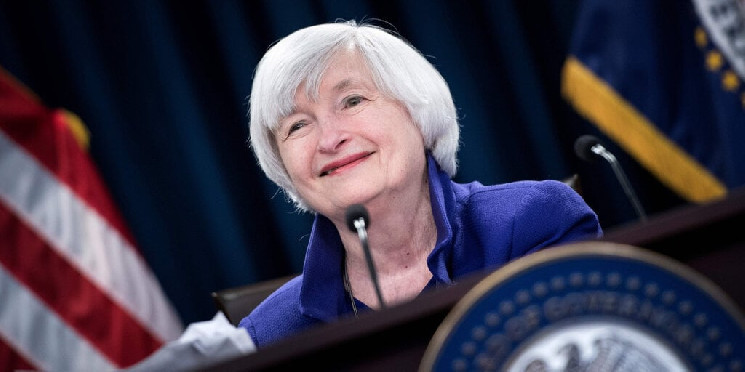“In a similar manner to how privately-issued ‘wildcat’ currencies were replaced by government-backed central currencies in the late-1800s, Central Bank Digital Currencies (CBDC) will likely need to replace stablecoins as the primary form of digital currency underpinning tokenized transactions,” the report, which was prepared by the Treasury’s Office of Debt Management, said.
Stablecoins dominated much of the 132 page report on the state of the Treasury’s finances in Q4 2024. Much was made of the significant amount of U.S. Treasuries, aka T-bills, that have been bought up by stablecoin issuers such as Tether and Circle. The Treasury estimates that $120 billion worth of T-bills have been purchased to serve as yield-bearing stablecoin collateral. The majority of that sum—nearly $81 billion—has been purchased by Tether, the company behind the crypto market’s largest stablecoin, USDT.
While many stablecoin advocates have argued that U.S. dollar-backed stablecoins bolster the dollar’s strength by increasing demand for T-bills, the Treasury appears unconvinced.
Wednesday’s report fixated on the “common occurrence” of stablecoins depegging or collapsing entirely in recent years, a situation the Treasury believes could lead to disaster if T-bills become increasingly integrated with the stablecoin industry.
Stablecoins are a crucial component of the crypto industry. By holding a steady value, they allow crypto traders to enter and exit positions without touching a fiat currency like the U.S. dollar. Stablecoins also function as dollar equivalents in markets where dollars are hard to come by.
The Treasury department estimates that over 80% of all crypto transactions involve a stablecoin. Tether's USDT is far and away the most widely traded cryptocurrency, generating $53 billion in trading volume in the last 24 hours alone.
And the increasing interconnectivity of stablecoins and traditional financial markets through T-bills is cause for concern, according to the Treasury.
“A collapse of a major stablecoin like Tether could result in a ‘fire-sale’ of their U.S. Treasuries holdings,” Wednesday’s report said. “While stablecoins currently represent a marginal segment of the T-bills market, growth over time may expose the T-bills market to increased risk of fire sales due to runs in the stablecoin market.”
Thus, the report recommended that the U.S. government eventually step in to replace private stablecoins with a CBDC presumably issued by the Federal Reserve.
In the last two years, CBDCs have become increasingly controversial in American politics. Several prominent Republican lawmakers have pledged to prevent their development, chastising a U.S. government-issued stablecoin as “Big Brother’s digital dollar.”
Former president Donald Trump, too, has emerged as a vocal CBDC critic while campaigning for re-election this year. Despite that stance, Trump’s crypto project, World Liberty Financial, plans to issue its own stablecoin, as Decrypt first reported earlier this week.
Trump and his business partners have, for months, framed private stablecoins as an effective means to promote the purchase of T-bills and, therefore, the dominance of the U.S. dollar worldwide.
That plan may have its fans—but it would appear the U.S. Treasury isn’t one of them.
 decrypt.co
decrypt.co
